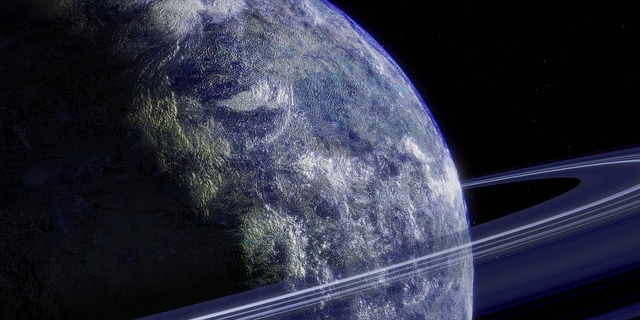The James Webb Space Telescope (JWST) has peered 155 light-years into the cosmos, revealing a remarkable icy debris disk around the young star HD 181327.
This discovery offers unprecedented insights into the early stages of planetary formation and provides compelling evidence that the building blocks of planets – and potentially life – form rapidly and in ways strikingly similar to our own solar system.
Using its sophisticated Mid-Infrared Instrument (MIRI), JWST detected the unmistakable signature of solid water ice embedded within the dusty ring orbiting HD 181327, a star a mere 23 million years old.
“Webb unambiguously detected not just water ice, but crystalline water ice, which is also found in locations like Saturn’s rings and icy bodies in our solar system’s Kuiper Belt,” said Chen Xie, the lead author of the new paper and an assistant research scientist at Johns Hopkins University in Baltimore, Maryland.
While water vapor has been observed elsewhere, this marks one of the clearest detections of solid water ice beyond our solar system, offering crucial confirmation for long-held models of early planetary chemistry.
The icy particles are not uniformly distributed. Instead, they are concentrated in the colder, more distant reaches of the debris disk, with the inner zones closer to the star showing a comparative depletion.
This pattern aligns perfectly with thermodynamic models predicting ice survival and accumulation in regions farthest from the central heat source.
The observed asymmetry is believed to be a direct consequence of intense ultraviolet (UV) radiation from HD 181327, which vaporizes water ice closer to the star, further confirming the active role of stellar radiation in shaping young planetary systems.
A key question addressed by this discovery is how the debris disk maintains its continuous supply of frozen water despite the constant threat of sublimation.
Astronomers hypothesize that frequent collisions between larger icy bodies, such as dwarf planets and planetesimals, are responsible.
These impacts release dust-sized water ice particles that replenish the disk, creating a self-sustaining cycle that keeps the outer disk rich in detectable icy material.
“When I was a graduate student 25 years ago, my advisor told me there should be ice in debris disks, but prior to Webb, we didn’t have instruments sensitive enough to make these observations,” said Christine Chen, a co-author and an astronomer at the Space Telescope Science Institute in Baltimore. “What’s most striking is that this data looks similar to the telescope’s other recent observations of Kuiper Belt objects in our own solar system.”
James Webb Space Telescope
The James Webb Space Telescope (JWST) represents humanity’s most ambitious and powerful space observatory, fundamentally transforming our understanding of the cosmos since beginning operations in 2022.
This $10 billion marvel of engineering serves as the scientific successor to the beloved Hubble Space Telescope, offering unprecedented capabilities that peer deeper into space and further back in time than ever before.
Positioned at the second Lagrange point (L2), approximately 1.5 million kilometers from Earth, JWST operates in the infrared spectrum with its massive 6.5-meter segmented primary mirror—nearly three times larger than Hubble’s.
This golden mirror, composed of 18 hexagonal segments coated with ultra-thin gold, collects infrared light that has been stretched by the universe’s expansion, allowing astronomers to observe the most distant galaxies formed just a few hundred million years after the Big Bang.
The telescope’s revolutionary design includes a tennis court-sized sunshield with five layers that keep its instruments at incredibly cold temperatures of -223°C (-370°F). This cooling is essential for detecting the faint infrared signals from ancient cosmic objects without interference from the telescope’s own heat signature.
JWST’s scientific achievements have already exceeded expectations. It has captured breathtaking images of stellar nurseries, revealed the atmospheric compositions of distant exoplanets, and identified galaxies that formed when the universe was merely 400 million years old. The telescope has also provided stunning details of familiar objects, from the turbulent atmosphere of Jupiter to the intricate structure of the Carina Nebula.
Beyond its spectacular imagery, JWST serves as a time machine, allowing scientists to study the universe’s evolution from its earliest epochs to the present day. Its observations are reshaping theories about galaxy formation, star birth, and the potential for life on other worlds, ensuring that this technological masterpiece will continue unveiling cosmic secrets for decades to come.

